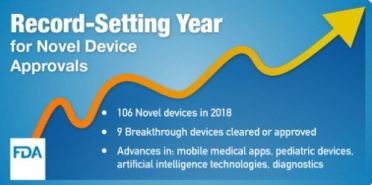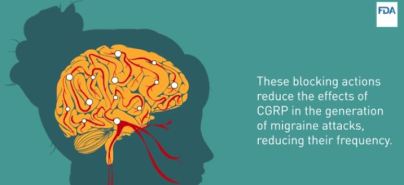News & Views: FDA opens, CDRH record-setting year, New Drug Class for Migraines
FDA Opens

 CDRH-Record Year for Device Innovation
CDRH-Record Year for Device Innovation
Success in advancing device innovation and approval/clearance novel, safe and effective technologies
- Approval of 106 novel devices, surpassing the 40-year record we set in 2017 of 99
- Granted 112 Breakthrough Device Designation requests; 9 approved/cleared
Examples of innovative products
- Automated insulin dosing system – including for those as young as age 7
- World’s smallest heart valve for newborns
- First blood test in the world to evaluate mild traumatic brain injury
- First mobile medical app to help treat substance abuse disorders
- Artificial Intelligence to detect diabetic retinopathy in adults
- Artificial Intelligence to detect wrist fractures
- First artificial iris
 New Drug Class Employs Novel Mechanism for Migraine Treatment and Prevention
New Drug Class Employs Novel Mechanism for Migraine Treatment and Prevention
Recently approved drug class targeting calcitonin gene-related peptide (CGRP) – elevated in blood serum during migraine attacks
- New migraine drugs block effects of CGRP
- Specialized monoclonal antibodies cloned subclasses of immunoglobulin G (IgG)
- Designed to have low potential to interact with other drugs
- Metabolized differently with fewer adverse reactions
- Aimovig (erenumab-aooe), Ajovy (fremanezumab-vfrm), Emgality (galcanezumab-gnlm)
Image credit: FDA
